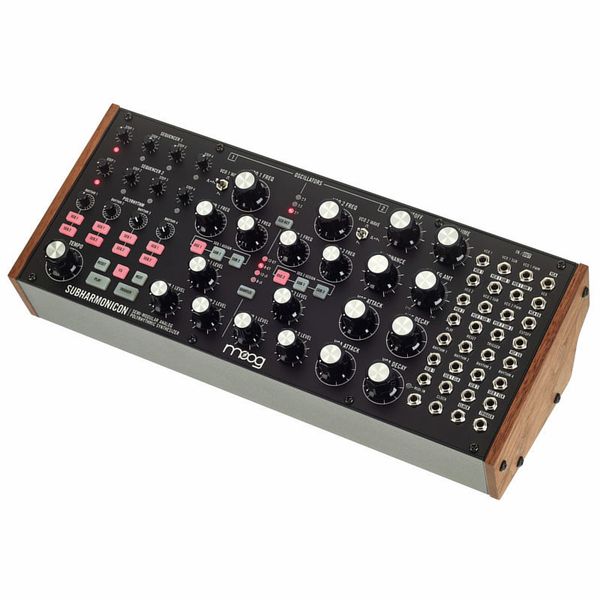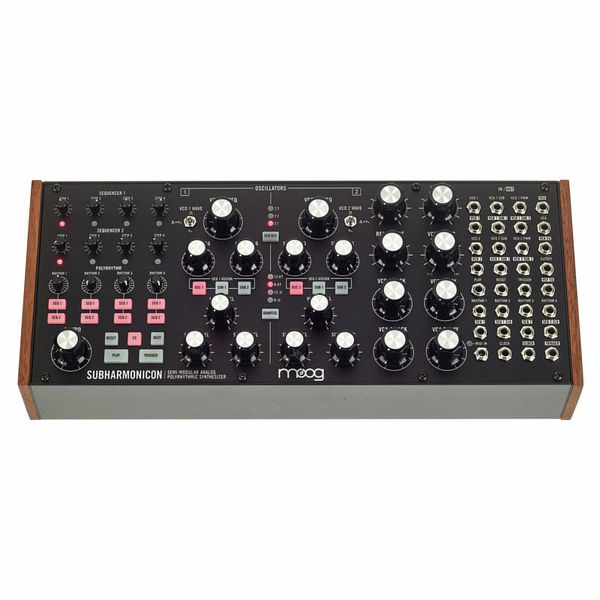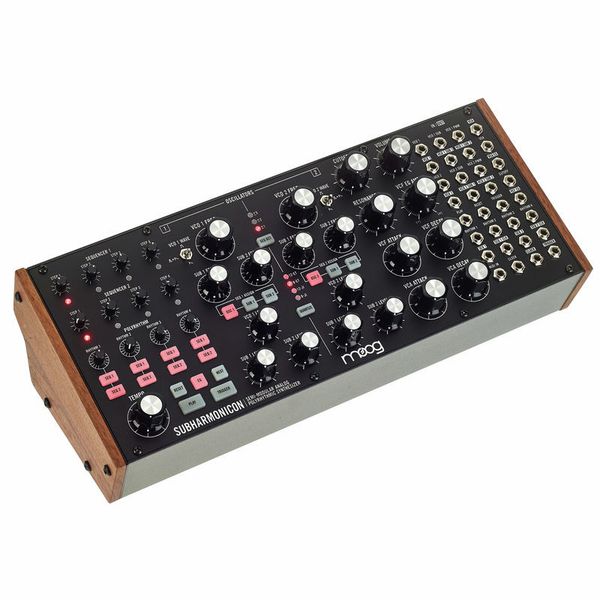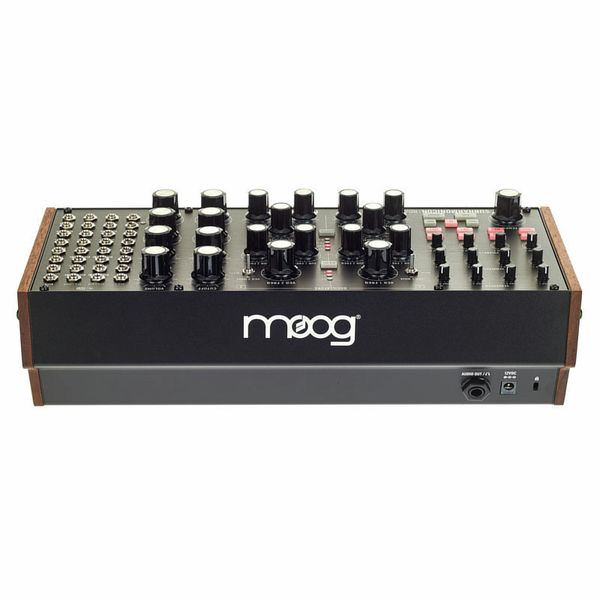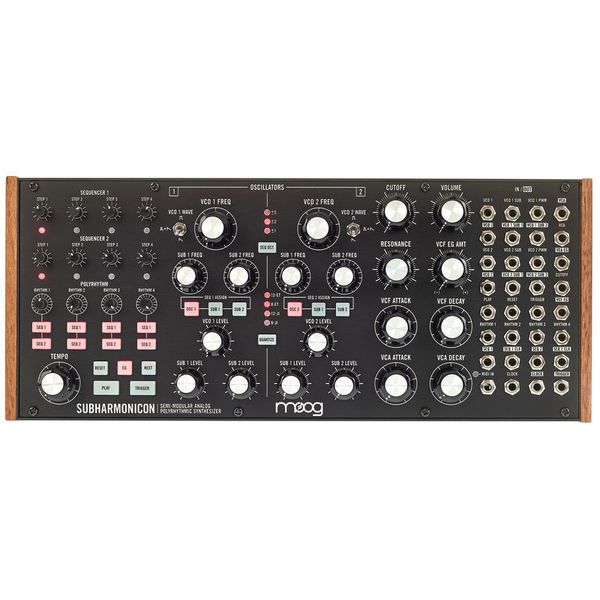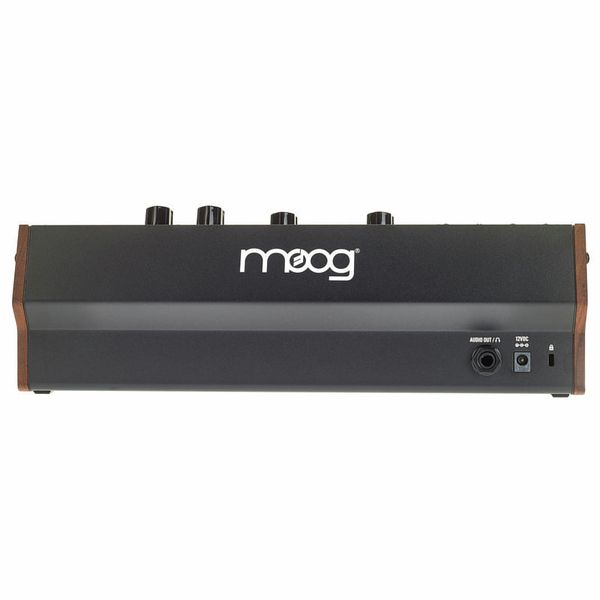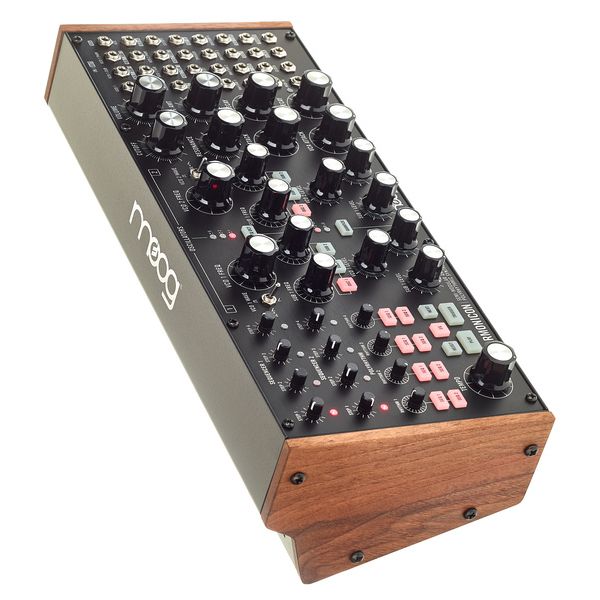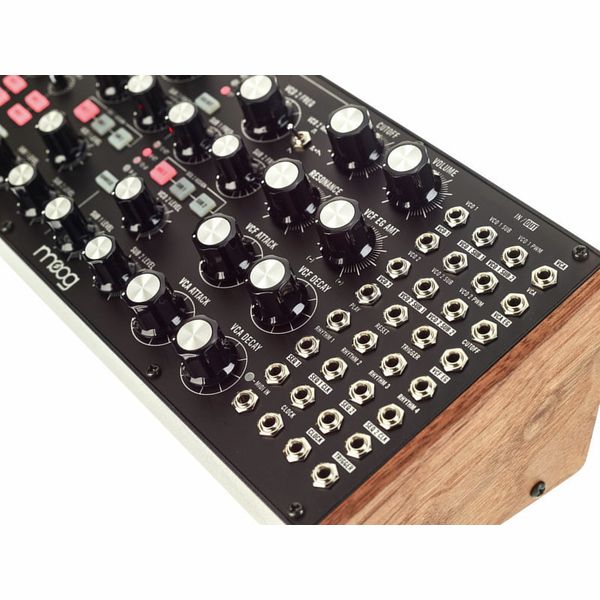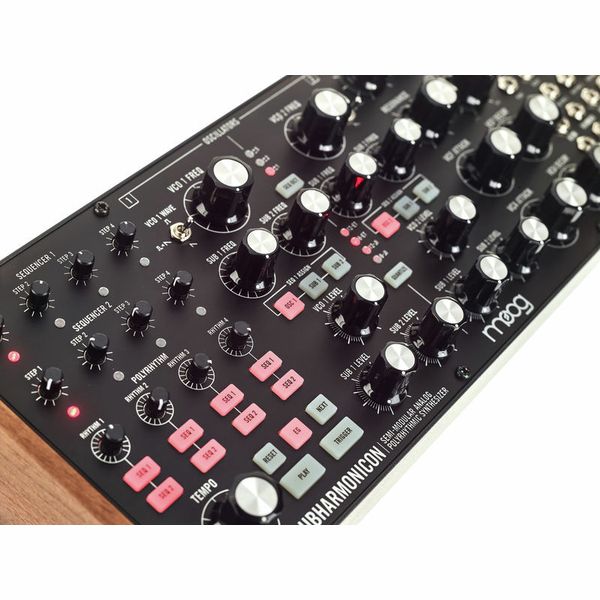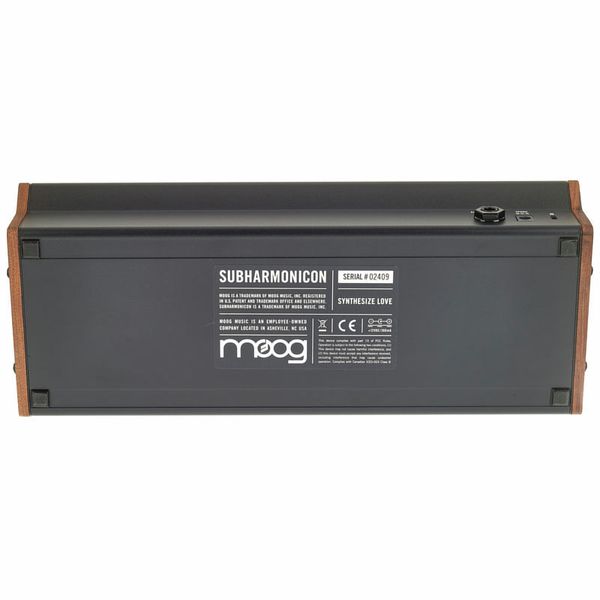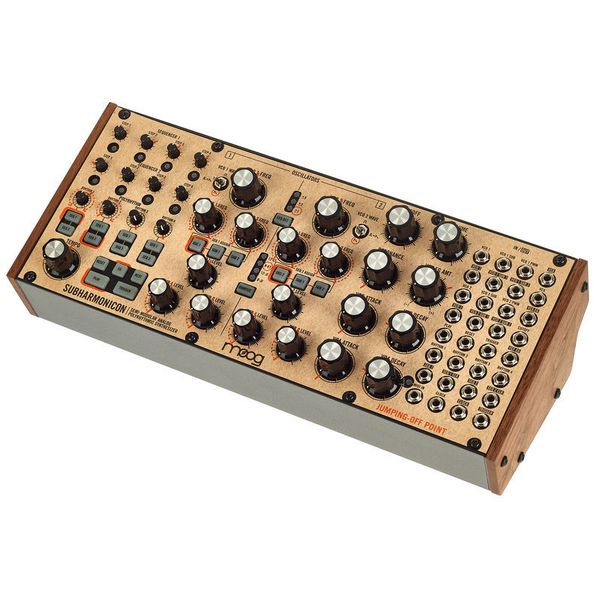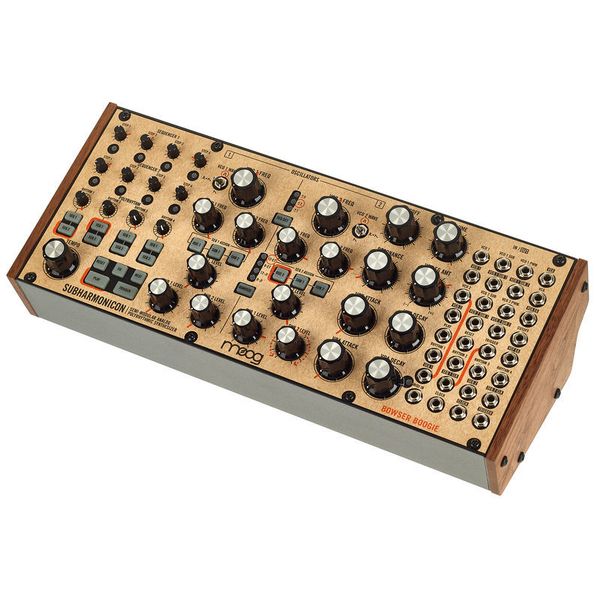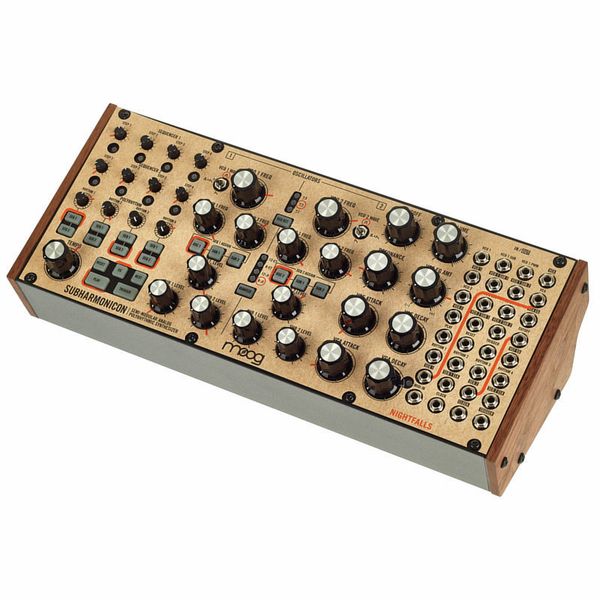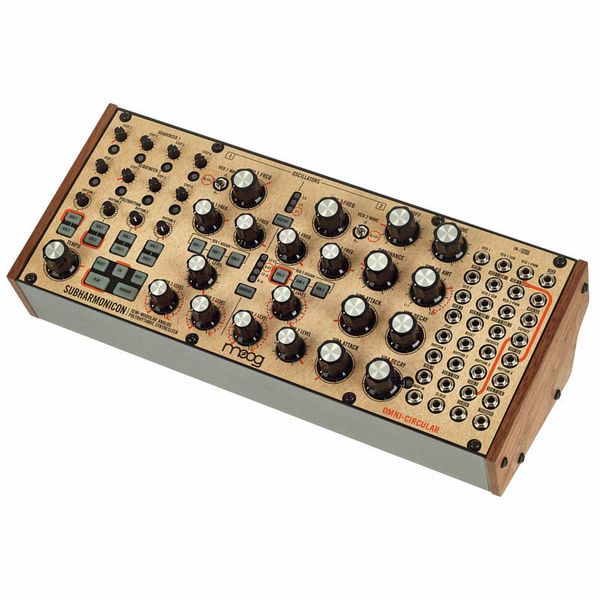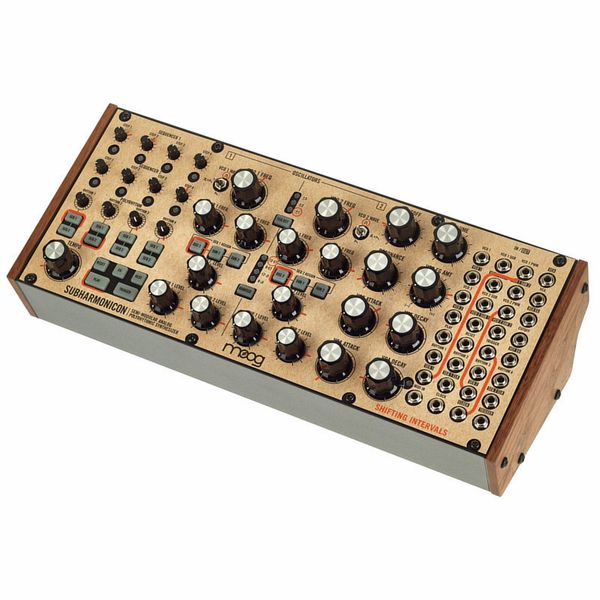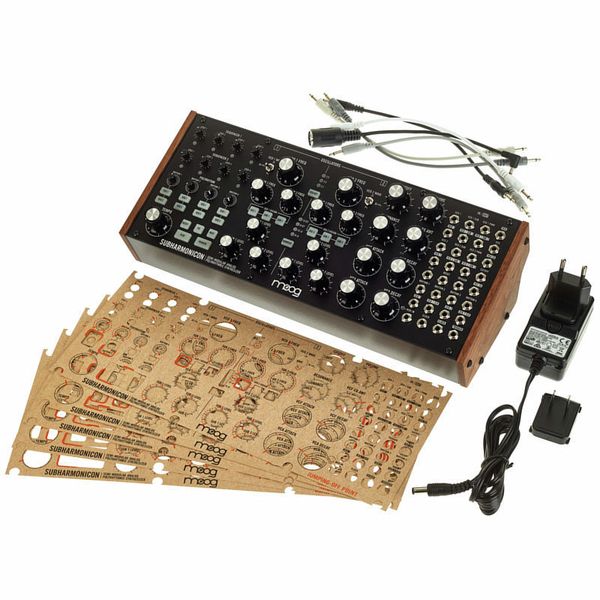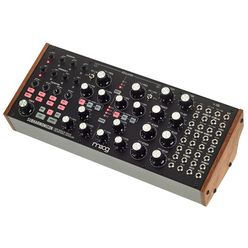Sintetizzatore
- Sintetizzatore semi-modulare politonale
- Due oscillatori analogici, ciascuno con due subarmoniche sintonizzabili
- Filtro Moog ladder risonante (passa-basso, -24dB/oct.)
- Inviluppo VCA e VCF, ciascuno con tempo di attacco e decadimento regolabile
- Due sequencer analogici a 4 fasi con quantizzazione selezionabile
- 4 generatori di ritmo per la creazione di pattern poliritmici
- Tempo interno regolabile da 20-3000 BPM
- Patchbay con 17 ingressi e 15 uscite (3,5 mm)
- Uscita linea/cuffia (6,3 mm)
- Dimensioni (L x A x P): ca. 319 x 107 x 133 mm
- Peso: circa 1,59 kg
- Specifiche eurorack: larghezza: 60 TE / HP, profondità: 26 mm
- Include alimentatore (12 V DC) e 6 cavi patch
- Case compatibile: art. 505270 (non incluso)
- Cover compatibile: art. 484167 (non inclusa)
In catalogo dal
Maggio 2020
Numero di articolo
490371
Unità incluse
1 Pezzo
Design
Desktop
Polyphony
4
Sound Generation
Analogue
MIDI interface
1x In
Storage Medium
None
USB-port
No
Effects
No
Arpeggiator
No
Number of Analog Outputs
1
Digital Output
No
Display
No
Optional Expansions
None
Special Features
Stepsequencer
Mostra altro
Comprati dai clienti che hanno visto questo prodotto
-
Moog Expander in mostra
-
Mostra Expander nella gamma di prezzo 500 € - 1000 €
-
Vai al gruppo del prodotto Expander
-
Vai al gruppo del prodotto Synth
-
Vai al gruppo del prodotto Tastiere e Pianoforti
-
Mostra le informazioni del produttore per Moog
-
Moog Tastiere e Pianoforti in generale





